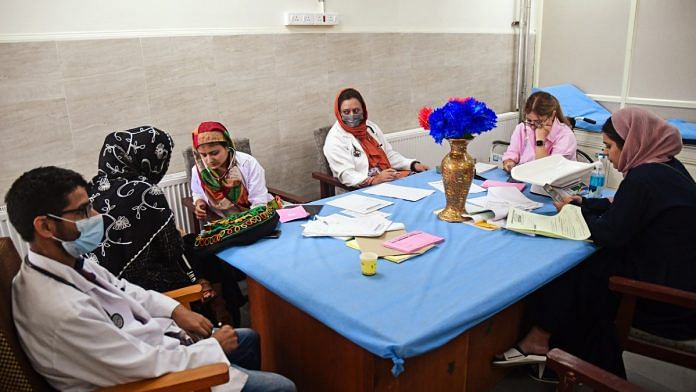New Delhi: Much was written about the lack of medical manpower, especially in the wake of the Covid pandemic, but the government has informed Parliament that India’s doctor-patient ratio currently stands at 1:834 which is better than the World Health Organisation’s (WHO) prescribed norm of one doctor per 1,000 people.
“As informed by the National Medical Commission (NMC), there are 13,08,009 allopathic doctors registered with the State Medical Councils and NMC as on June, 2022. Assuming 80 per cent availability of registered allopathic doctors and 5.65 lakh AYUSH doctors, the doctor-population ratio in the country is 1:834 against the WHO norms of 1:1,000,” Minister of State for Health and Family Welfare Bharati Pravin Pawar said, replying to a question asked by Rajya Sabha member Kanimozhi N.V.N Somu.
This means that at an availability of 80 per cent, the ratio of allopathic doctors to population — that is about 10,46,407 doctors for a population of 124 crore, is about one doctor per 1,194 people.
This number is marginally better than what was calculated in the report of the 15th Finance Commission that came out last year. Every allopathic doctor in India, the Commission had estimated, caters to at least 1,511 people, much higher than the WHO norm of one doctor for every 1,000 people. The shortage of trained nurses is more dire, with a nurse-to-population ratio of 1:670 against the WHO norm of 1:300.
The number has, however, changed dramatically over the last few years. In 2018, the National Health Profile — a document brought out by the government as an update on the state of health infrastructure and disease profile — estimated that one allopathic doctor in India caters to over 11,000 people.
Also Read: India accounts for 1 in every 5 cervical cancer cases, almost 1 in 4 deaths, finds Lancet study
87 per cent increase in MBBS seats
The inclusion of AYUSH doctors in a calculation of doctor-patient ratio has gilded the numbers but more than that the ongoing increase in medical education infrastructure has meant that the number of active doctors in the pool is consistently on the rise.
Pawar dealt with this aspect too in her reply: “There is an increase of 67 per cent in medical colleges from 387 before 2014 to 648 as of now. Further, there is an increase of 87 per cent in MBBS seats from 51,348 before 2014 to 96,077 as of now, and an increase of 105 per cent in PG seats from 31,185 before 2014 to 64,059 as of now.”
Of the 157 new medical colleges approved so far, 94 are already functional. Under the Central Sector Scheme for setting up of new AIIMS, 22 AIIMS were approved. Undergraduate courses have started in 19 of these.
The most number of medical colleges, 22, have been set up in Uttar Pradesh in the last five years followed by 21 in Tamil Nadu and 12 in Maharashtra, the minister told the House.
(Edited by Tony Rai)
Also Read: Vaccination gaps, drop in mask use, no social distancing: Why India is seeing measles outbreaks



